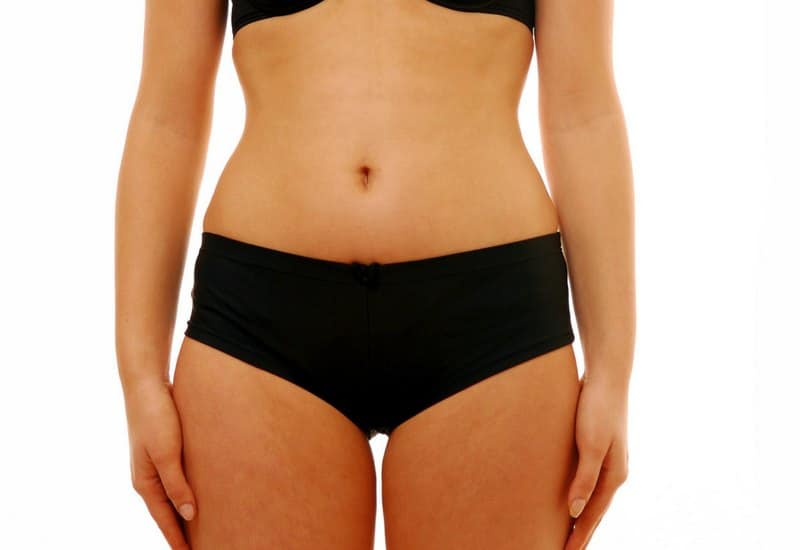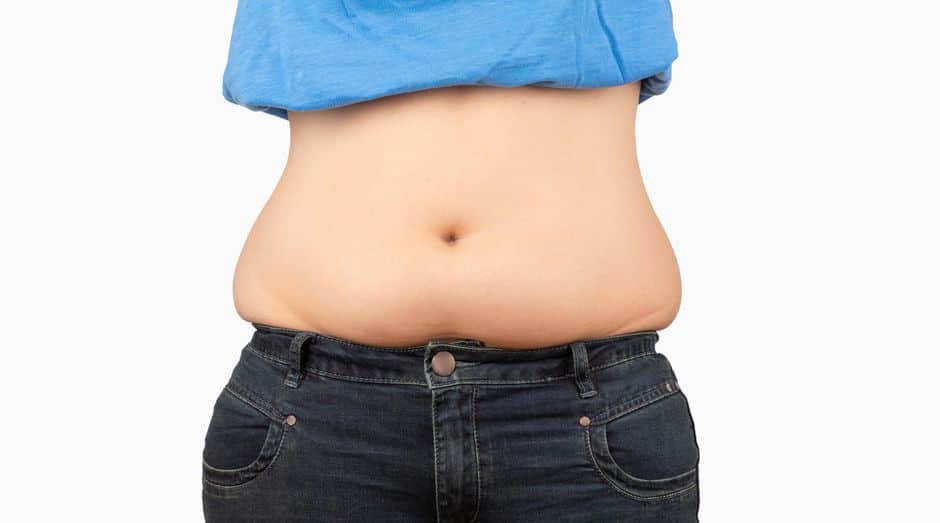What are hip dips, how do you get rid of hip dips, what causes hip dips, and hip dip surgery? We’ll cover this and more here!
At the Silhouette Plastic Surgery Institute, our Orange County plastic surgeons specialize in addressing concerns related to body shape, including the common issue of hip dips. Hip dips refer to indentations that occur between the hip bone and outer thighs, creating a less round shape along the sides of the hips. While hip dips are completely normal, many individuals seek solutions to minimize noticeable hip dips, and Dr. Daneshmand offers various options to address this concern. While the shape of the hips is largely determined by genetic body shape and bone structure, procedures such as hip dip surgery or hip dip injections can help enhance the curves and create a smoother transition between the waist and hips. Dr. Daneshmand utilizes advanced techniques, including Sculptra injections, to add volume and improve the appearance of prominent hip dips.
If you’re looking for how to get rid of hip dips, Silhouette has you covered. We offer a variety of options for changing the contour of your hips, including hip dip surgery in Bakersfield, CA, BBL surgery in Bakersfield, liposuction in Bakersfield, lower body lift in Bakersfield, and more. To schedule an appointment with us, please call 949-359-8397 or fill out our online intake form.
What Are Hip Dips?

Hip dips, also called violin hips, are a fairly common feature of women’s bodies. Some women have them, some don’t, and some wish they didn’t. The term refers to a small indentation in the hips, preventing the full, round shape that many women strive for. While they are a normal part of the body structure and not caused by excessive weight, they might not be the shape you want in your hips.
Some people’s hip dips are very subtle, while others are more pronounced. Some people can lessen their appearance with diet and exercise, while others can’t. It’s also important to note that hip dips are not the same as love handles.
Hip Dips vs Love Handles

Skin that extends out from the hips is referred to as love handles. Love handles can be more noticeable when accompanied by tight clothes, although they aren’t created only by tight-fitting clothes. They are signs of excessive fat buildup around the hips and abdomen. Like hip dips, they are also a common (albeit annoying) occurrence.
One of the main differences between hip dips and love handles is that hip dips are caused by bone structure rather than body fat. To get rid of hip dips or love handles, there are two options: hip dips exercise or cosmetic surgery for hip dips. We explore both options in the following sections.
What are Violin Hips?
“Violin hips” is a colloquial term used to describe a body shape where the hips are slightly wider than the waist, creating a silhouette reminiscent of the curves of a violin. This shape often emphasizes a narrower waistline with fuller hips, similar to the hourglass figure. The term is more about visual imagery than any specific medical or anatomical definition, and it’s often used in fashion or body positivity discussions to celebrate diverse body shapes and proportions.
What Causes Hip Dips?
Hip dips result more from your bone structure than your level of body fat or muscle mass. In a nutshell, heredity is to blame for hip dips. When a person’s hip bone is higher than their femur, fat and muscle sink inward. When observed from the outside, the skeletal structure of a person’s pelvis, the breadth of their hips, and their total body fat and muscle composition all have an influence on how prominent their hip dips are.
The most important thing to remember is that they are not an indication of being overweight or inactive. Even though the amount of body fat held in that location can make them more obvious, and having greater muscle mass can also give you a more pronounced appearance, decreasing body fat in that area won’t necessarily make them go away since they’re primarily due to bone structure that you can’t modify.
Are Hip Dips Normal?
Absolutely. They do not indicate skeletal abnormalities or unhealthiness. But that doesn’t mean that you have to like them, either. Even “normal” things like hip dips or love handles can be changed if the person who has them would rather not have them. It’s up to the individual to decide what they do and don’t like about their own body. Those who decide that they want to improve their hip dip area usually opt for either exercise or plastic surgery.
Can You Get Rid of Hip Dips?
Yes. However, because they’re more a result of the structure of your hip bones than excess body fat, it’s much harder to get rid of them with exercise. For many, the fastest and simplest way to improve the shape of their hips is through fat grafting, BBL surgery, or another form of body contouring. Consult with an experienced Orange County plastic surgeon at Silhouette to discuss how to get rid of hip dips in the most effective way for you.
How to Get Rid of Hip Dips
As we stated previously, the two main options for getting rid of hip dips are certain types of exercise and plastic surgery procedures. If you struggle with the indentation that your hip bone structure creates, we’re here to help. Below, we list the most effective exercises and procedures that will allow you to either improve the shape of your hips or rid yourself of hip dips completely.
Hip Dips Workout

In order to minimize the appearance of hip dips, there are a number of strength-focused exercises you can try at home. We recommend training the glutes, the outer thighs, and the inner thighs for best results. Below, we list some of the best hip exercises and how you can do them at home. We recommend using a light resistance band, ankle weights, or dumbbells for some of these exercises.
Squats
These are a great option for a multitude of reasons. They help you to both train yourself in a functional pattern of movement and they’re one of the most effective ways to develop your buttock muscles and upper legs. This exercise helps to strengthen the abductors and quadricep muscles.
- Stand up with your feet slightly wider than the width of your shoulders.
- Point the toes outward slightly.
- Engage the glutes and the abdominal muscles.
- Begin by bending at the hips and knees at the same rate.
- Push the buttocks back as if you’re trying to sit on a chair behind you.
- Make sure your back is flat as you lower into the squat, and keep your feet flat on the floor.
- Reverse the previous movements to return to the starting position.
Curtsy Lunges
Next, we have the curtsy lunge. This is essentially a normal lunge exercise with a twist added in which you cross one leg behind the body. It targets the gluteus medius muscles, plus the inner thighs.
- Stand upright with your feet together and hold your hands either by your waist or up to your chest.
- Start stepping back with your left leg, and cross it behind your right leg.
- As you place your left foot on the ground, start to bend both knees.
- Hold the lower position for one second, then reverse everything back to standing position.
- Repeat with the opposite leg, then alternate.
Curtsy Step Downs
This is similar to the previous exercise, but it provides an increase in the range of motion. It forces the glute muscles and upper thighs to work a little harder.
- Stand on a small elevated surface, like a sturdy stool or bench. Keep your core engaged and glutes as you do this exercise.
- Step your left leg down off the bench and cross it behind your right leg.
- Bend the front knee slowly and carefully until the bottom foot touches the ground.
- Reverse the movement and return to the starting position, then repeat your repetitions on one leg before moving to the other leg.
Banded Lateral Walks
This is a highly effective exercise for engaging the glutes and the abductors. These muscle groups allow you to lift the legs away from the body and rotate them. Have a resistance band handy for these.
- Place the resistance band around the legs at knee level.
- Stand with the knees bent and feet shoulder width apart, keeping the toes pointed forward.
- Engage the core and keep your chest up. Then step laterally while keeping the orientation of your feet the same.
- Start with the left leg and complete all repetitions on that side before switching to the other leg.
Banded Clam Shells
These are also called hip openers. They help to train the glutes and in training external rotation. Do this with a light exercise band.
- Lie on your side with the resistance band around your legs at the knees.
- Keep your legs bent at the knees and stack your feet.
- Rotate the top knee toward the ceiling and keep the heels together.
- Pause for one count at the top, repeat for the desired number of repetitions, then switch to the other leg.
Side Leg Raises
This exercise focuses on the glutes through hip abduction.
- Lie on your side with a resistance band around the legs slightly above the knees, or lower.
- Keep the legs straight and the feet stacked.
- Raise the top entire leg upward while pointing your feet.
- Pause for one count at the top, then slowly return to the starting position.
- Repeat on the other side.
Fire Hydrants
These not only help to strengthen the glutes, but also improve hip mobility and stability of the core.
- Get on your hands and knees while keeping your back flat.
- Brace the core and keep the back flat throughout the exercise.
- Lift your right leg off the floor, rotating the hip out to the side. Keep the right knee bent.
- Draw a circle with the knee while engaging the core and keeping the back flat.
- Repeat these steps with both the right leg and left leg evenly.
Glute Bridges
This is a great option for simultaneously strengthening the glutes and the core. Additionally, it is possible to modify this exercise to increase its difficulty.
- Lie on your back and keep the knees bent. Place the feet flat on the floor, approximately shoulder width apart.
- Ensure that you align your spine to have your lower back touching the floor.
- Squeeze the buttocks and extend the hips forward. Hold this position for around three to five seconds before returning.
Hip Thrusts
This is a variation of the glute bridges. It involves the use of a bench or elevated surface on which to rest your upper back as you raise the hips.
How to Get Rid of Hip Dips Without Exercise
Because exercise will not always help with hip dips, there are other alternatives. Hip dip surgery, Sculptra hip dip injections, and fat transfer body contouring are just a few of these options. We outline these options in more detail below.
Hip Dip Surgery in Bakersfield, CA
There are surgical and nonsurgical solutions for people who want to get rid of their hip dips. Dr. Hootan Daneshmand at Silhouette Plastic Surgery provides several Bakersfield hip dip surgery options. Liposculpting, which involves fat grafting, and Sculptra, which is essentially hip dip injections, are the two procedures.
Fat Transfer Body Contouring in Bakersfield, CA

The first option is to have a body contouring surgery, which is also known as fat grafting. This low-risk technique works by sucking fat from one part of the body, such as the stomach, thighs, or buttocks, and distributing it in the hip dip area. The fat transfer fills in and levels out the contours of the hip dip for a smoother, more voluminous form. Synthetic fillers or even silicone implants may be used to medically fill out the hip dip area if a patient does not have the fat to extract from other places of the body.
Hip Dip Filler in Bakersfield, CA
Sculptra is an injectable implant that employs dermal filler to improve hip volume and roundness without surgery. The FDA-approved hip dip injections are composed of a synthetic sugar called Poly-L-Lactic Acid. The filler works by encouraging the development of localized collagen in the desired location.
Sculptra is a non-invasive treatment option with the drawback of not providing rapid results. Sculptra hip dip injections are a lengthy procedure that takes numerous treatments over the course of six months before a patient sees the desired results.
Contact our Bakersfield MedSpa to learn more about Sculptra in Bakersfield, CA.
Orange Co and Bakersfield Hip Dip Surgeon
At Silhouette, we understand that you don’t always have time to schedule workouts on a daily basis to get the results you want. That’s why we offer hip dip surgery, fat grafting, liposuction, and Sculptra for hip dips to our patients. If you want to determine if any of these options are right for you, we recommend scheduling a consultation with Dr. Hootan Daneshmand. Call our office at 949-359-8397 to schedule an appointment, or fill out our online intake form.

